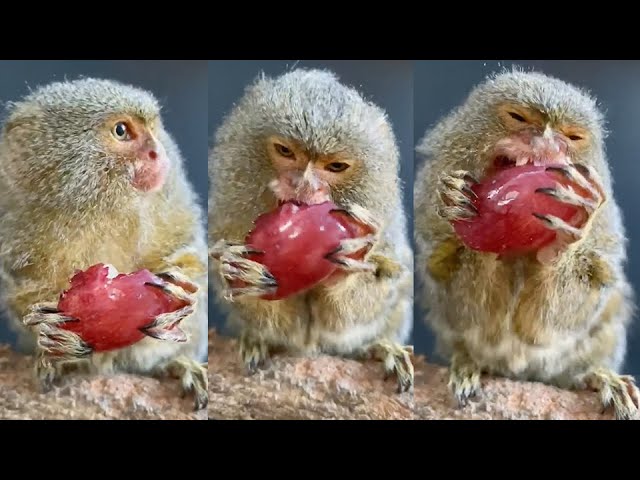What Do Marmoset Monkeys Eat, Marmoset monkeys, small primates native to South America, have a fascinating and diverse diet that plays a vital role in their overall health and survival. Understanding what marmoset monkeys eat is essential for those interested in primate biology, conservation, or exotic pet care. These tiny creatures, often measuring less than 8 inches long, require a variety of nutrients to thrive in their natural habitat and in captivity.
Natural Diet in the Wild
In the wild, marmoset monkeys are omnivores, which means they eat both plant and animal-based foods. Their diet is highly influenced by their arboreal (tree-dwelling) lifestyle. Here’s a breakdown of what they commonly consume:
- Tree Sap and Gum: One of the most distinctive features of marmosets is their reliance on tree exudates. Using their specialized teeth, they gnaw holes in tree bark to access sap, gum, and resin. This sugary substance is a major energy source and is especially important during times when fruit is scarce.
- Fruits and Berries: Marmosets enjoy a wide variety of fruits, including bananas, papayas, figs, and mangoes. Fruits provide essential vitamins, fiber, and hydration.
- Insects and Small Animals: Protein is another critical part of their diet. Marmosets often hunt insects like grasshoppers, beetles, and spiders. Occasionally, they may eat small lizards, frogs, or bird eggs for additional protein.
- Flowers and Nectar: In some regions, marmosets feed on flower nectar, contributing to pollination. This sugary liquid is a supplementary energy source.
- Leaves and Plant Matter: Although not a primary food, leaves and other green matter are consumed occasionally, especially when other food sources are limited.
Diet in Captivity
Captive marmosets, such as those in zoos or private care, require a carefully planned diet to mimic their natural intake. Here’s what their diet typically includes:
- Fresh Fruits and Vegetables: Apples, grapes, sweet potatoes, carrots, and leafy greens are commonly offered.
- Protein Sources: Cooked eggs, mealworms, crickets, and specially formulated primate protein biscuits are used.
- Tree Gums or Gelling Agents: Commercially available acacia gum or gel-based supplements are provided to replicate their natural tree sap consumption.
- Vitamin and Mineral Supplements: To prevent deficiencies, caretakers often add powdered vitamins to their food.
Nutritional Considerations
Feeding marmoset monkeys is not just about providing variety but ensuring balance. A poor diet can lead to metabolic bone disease, obesity, or behavioral issues. The calcium-to-phosphorus ratio is particularly important, as marmosets are prone to bone-related illnesses if not monitored.
Conclusion
So, what do marmoset monkeys eat? In short, their diet is a mix of tree sap, fruits, insects, and small amounts of other plant and animal materials. Whether in the wild or in captivity, their unique nutritional needs must be met for them to lead healthy and active lives. Understanding their dietary habits not only helps in better care but also supports conservation efforts for these charming and curious primates.
You Might Also Like These:


